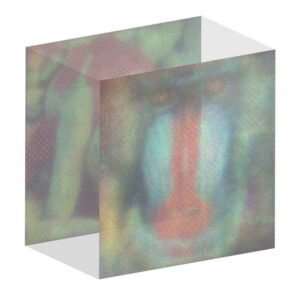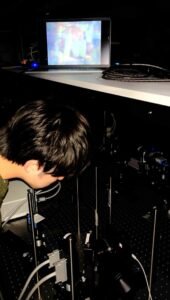A team of scientists from the University of Tokyo has revealed a major breakthrough that allows them to create realistic 3D holographic displays using an ordinary iPhone screen.
While conventional approaches to holography involve complex and expensive laser emitters that have limited their practical use, the researchers behind this novel approach say their work could lead to dramatic improvements in holographic displays for virtual reality applications, including gaming, training, and even advanced military applications.
3D Holographic Displays Limited by Cost and Complexity
In science fiction, holograms are used for anything from basic communications to advanced military weaponry. In the real world, 3D holographic displays have yet to break through to everyday products and devices. That’s because creating holograms that look real and have significant fidelity requires laser emitters or other advanced pieces of optical equipment. This situation has stymied commercial development, as these components are complex and expensive.
More recently, research scientists were able to create realistic 3D holographic images without lasers by using a white chip-on-board light-emitting diode. Unfortunately, that method required two spatial light modulators to control the wave fronts of the emitted light, adding a prohibitive amount of complexity and cost.
Now, those same scientists say they have created a simpler, more cost-effective way to create realistic-looking 3D holographic displays using only one spatial light modulator and new software algorithms. The result is a simpler and cheaper method for creating holograms that an everyday technology like a smartphone screen can emit.
iPhone 14 Screen Creates Realistic Holograms
“Although holography techniques can create a very real-looking 3D representation of objects, traditional approaches aren’t practical because they rely on laser sources,” said research team leader Ryoichi Horisaki from The University of Tokyo in Japan. “Lasers emit coherent light that is easy to control, but they make the system complex, expensive, and potentially harmful to the eyes.”
To conquer this limitation, Horisaki’s team wanted to see if they could use lower-cost technology and the power of advanced computer algorithms to create a 3D holographic display that would rival displays using lasers. The key, they say, is a technology known as computer-generated holography (CGH) paired with a simple component known as a spatial light modulator.


To demonstrate their potential breakthrough approach, the researchers created a two-layer optical reproduction of a full-color three-dimensional image. The first layer is projected by the spatial light modulator, and the second layer is projected by the screen off of an iPhone 14 smartphone.
Next, the team’s customized algorithms coordinated the display of the two images to create a realistic-looking 3D holographic display that resembled those produced by expensive laser systems.
While the approach seems simple on the surface, the scientists say it is incredibly complex.
“It required carefully modeling the incoherent light propagation process from the screen and then using this information to develop a new algorithm that coordinated the light coming from the device screen with a single spatial light modulator,” they explain.
Fortunately, that work paid off, resulting in a new approach to designing and projecting realistic holographic displays that are significantly simpler and less expensive than the industry standard.
“This work aligns with our laboratory’s focus on computational imaging, a research field dedicated to innovating optical imaging systems by integrating optics with information science,” said Horisaki. “We focus on minimizing optical components and eliminating impractical requirements in conventional optical systems.”
“Holographic displays that use low-coherence light could enable realistic 3D displays while potentially reducing costs and complexity,” added Otoya Shigematsu, the paper’s first author. “Although several groups, including ours, have demonstrated holographic displays using low-coherence light, we took this concept to the extreme by using a smartphone display.”
New Approach Could Revolutionize Virtual Reality
In their study, which is published in the journal Optical Letters, the scientists behind the new method for generating 3D holographic displays say their current work only created a demonstration of their approach and that more work would be needed to apply it to commercial, military, and industrial applications.


However, they say the basic science behind the integration of computer algorithms and simple display technologies is a huge step toward dramatic improvements in virtual reality devices like headsets used in virtual gaming environments. In fact, they believe that their method is actually safer than traditional approaches, especially when used in close-up displays like VR headsets.
“We believe that this method could eventually be useful for minimizing the optics, reducing costs, and decreasing the potential harm to eyes in future visual interfaces and 3D display applications,” said Shigematsu. “More specifically, it has the potential to enhance the performance of near-eye displays, such as the ones being used in high-end virtual reality headsets.”
The scientists say they are now working on improving their algorithms to increase the number of layers and, therefore, the digital information they can display. If successful, they say they could create even more complex and realistic 3D holographic displays.
Christopher Plain is a Science Fiction and Fantasy novelist and Head Science Writer at The Debrief. Follow and connect with him on X, learn about his books at plainfiction.com, or email him directly at christopher@thedebrief.org.

